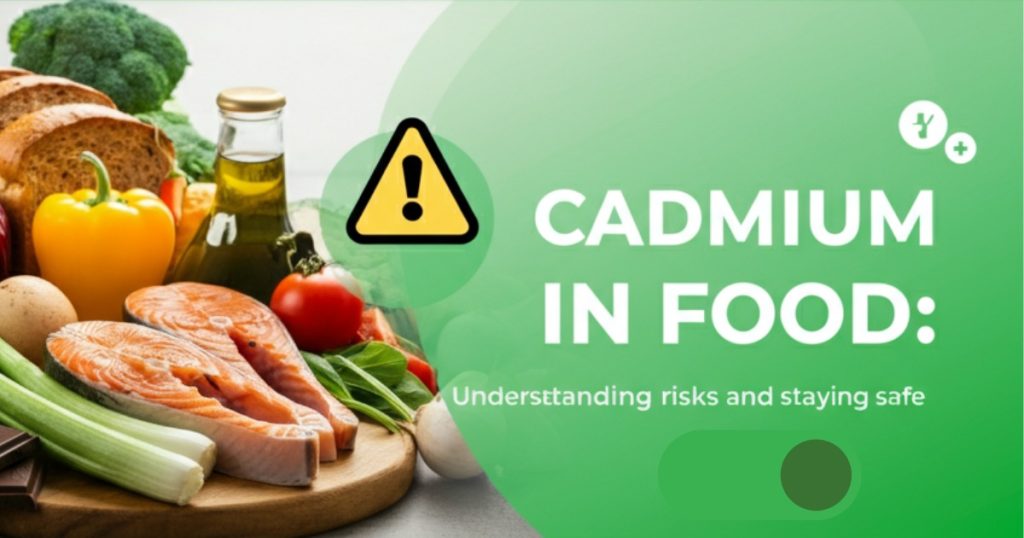
What is Cadmium in Food: Sources, Risks & Prevention
Despite not being highlighted much, cadmium is a heavy metal that is present in many different foods and presents serious health problems. Even while your food may contain small amounts of these substances, over time, the cumulative impact might cause major health issues. The purpose of this article is to explore What is Cadmium in Food, the causes of cadmium’s presence in our diet, any possible health risks, and precautions against exposure.
What is Cadmium in Food?
Cadmium (Cd) is a heavy metal that pollutes the environment both naturally and through industrial and agricultural processes. The general public who do not smoke are primarily exposed to cadmium through food.
Wondering where cadmium is found? The majority of dietary cadmium exposure comes from the following food groups: meat and meat products, vegetables, nuts and pulses, starchy roots or potatoes, and cereals and cereal products. Vegetarians are more exposed to certain foods because they consume more grains, nuts, oilseeds, and pulses. This also applies to frequent eaters of wild mushrooms and bivalve mollusks.
Renal failure is a potential consequence of cadmium’s primary toxicity to the kidney. Bone demineralization is another effect of cadmium. Occupational investigations have determined that cadmium is a Group 1 human carcinogen.
What Foods Highest in Cadmium?
Cadmium-rich foods include chocolate, cereal bars, offal, sweet and savory biscuits, and crustaceans and mollusks.
Depending on the amounts that the French population consumes, the following foods make up the majority of their cadmium intake:
- Bread,
- Vegetables,
- Potatoes and products containing potatoes.
Additionally, seaweed has a tendency to accumulate this element, which is found in the marine environment: about 25% of edible seaweed has concentrations above the maximum advised level.
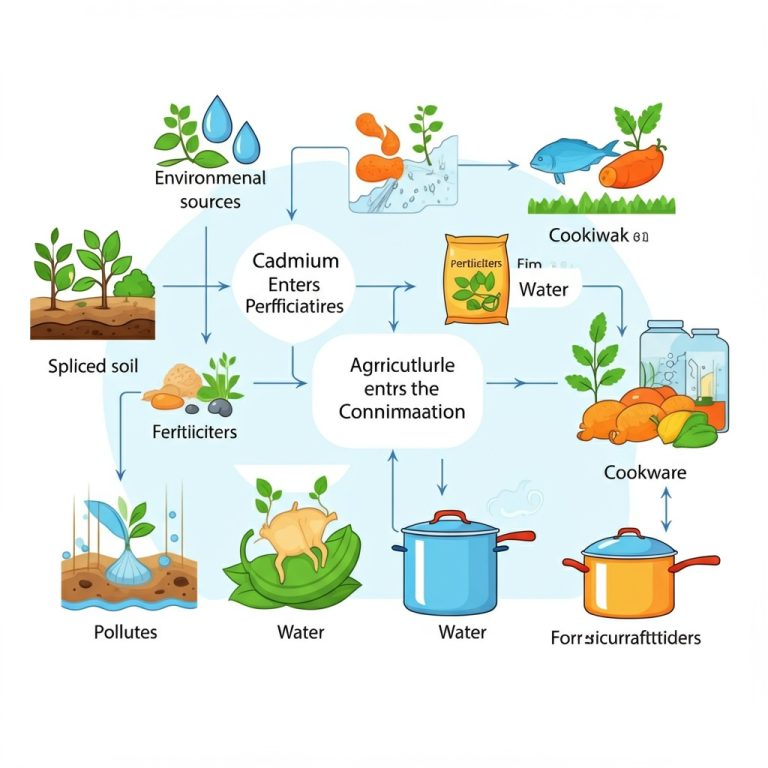
Sources of Cadmium in Food
To address the hazards posed by cadmium’s presence, it is crucial to comprehend how it contaminates food. The sources can be broadly divided into three categories: agricultural, food processing, and environmental.
Environmental Sources
The primary way that cadmium enters the food chain is through contaminated soil and water. A few important environmental channels are as follows:
- Soil Contamination: Using phosphate fertilizers, disposing of industrial waste, and air deposition can all raise the amount of cadmium in soils.
- Water Pollution: Cadmium can enter agricultural fields where crops are cultivated through runoff from contaminated water bodies.
Agricultural Practices
Cadmium enters our food supply through agriculture, which serves as a conduit from natural sources. Among the crucial elements are:
- Fertilizers: Cadmium can be an impurity in fertilizers, particularly phosphate fertilizers. They can aid in the buildup of this hazardous metal in crops when they are applied to the soil.
- Pesticides: Although the degree of cadmium exposure varies by region and agricultural practices, some pesticides used in farming are a contributing factor.
Food Processing and Preparation
The risk of cadmium exposure does not go away even after food has passed the processing stage:
- Equipment Contaminated: Cadmium can enter food items through food processing equipment that has been exposed to or contains the metal.
Cooking Techniques: Some cooking techniques, especially those that use exposed heat sources, can cause contaminated cookware to emit more cadmium.
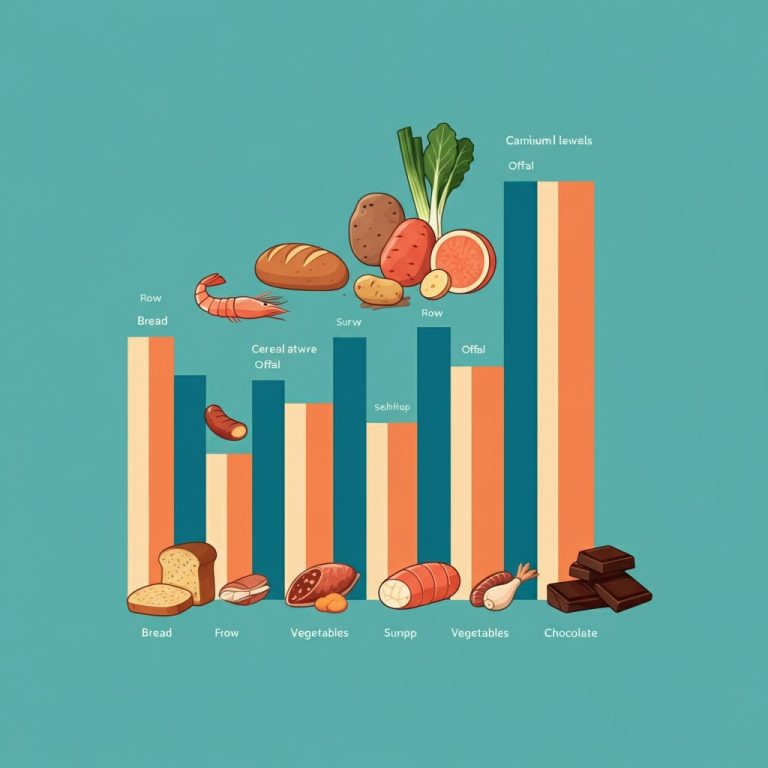
Foods at Risk of Cadmium Contamination
Cadmium buildup is more likely to occur in some foods than others. Here are a few of the most impacted categories:
Crops and Vegetables
It is known that some crops, especially tubers and leafy greens, can absorb cadmium from the soil. Here are a few instances:
- Spinach: Because it is leafy, it accumulates at high rates.
- Potatoes: They are known to absorb cadmium, especially when grown in contaminated soil.
Seafood
Cadmium can be concentrated in the tissues of many aquatic organisms, and several seafood species are especially good sources of exposure for humans:
- Mollusks: Because they filter-feed, oysters and clams typically have higher cadmium levels.
- Fish: Some fish species, particularly those that live in contaminated waterways, can also build up significant amounts.
Meat and Dairy Products
Animal products can introduce cadmium into the human food chain:
- Beef and Pork: Cadmium can build up in the tissues of animals bred in contaminated locations, and this can subsequently find its way into meat products.
- Dairy: If cows drink tainted water or feed, their milk may include cadmium.
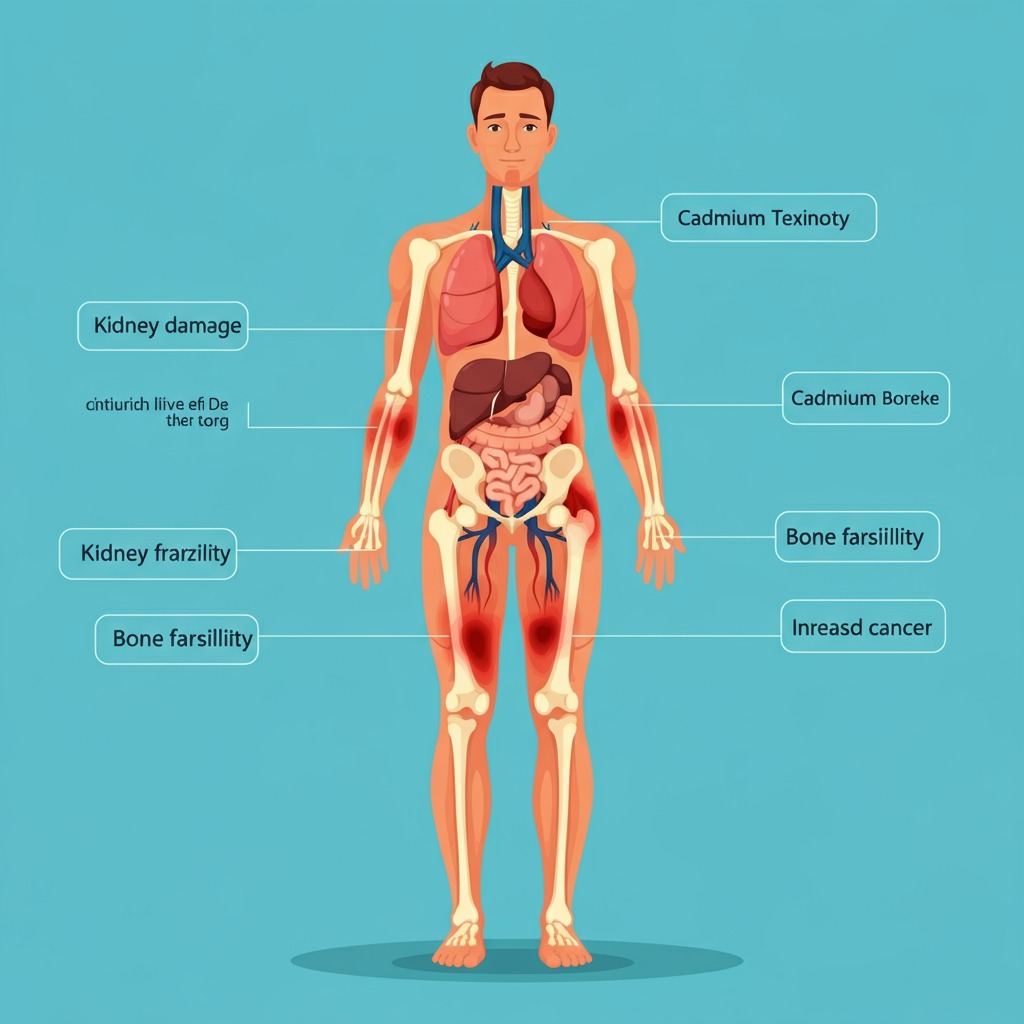
Health Risks Associated with Cadmium Consumption
Continuous cadmium exposure symptoms can have major negative effects on health, even if low amounts may not be dangerous right away.
Acute and Chronic Effects
There are two types of cadmium’s health effects: acute and chronic.
- Acute Exposure: This frequently occurs during high-level exposures (e.g., industrial accidents) and can result in symptoms including nausea, vomiting, and diarrhea.
- Chronic Exposure: Numerous health problems are associated with prolonged exposure, such as:
- Kidney Damage: Renal impairment can result from cadmium buildup in the kidneys.
- Bone Fragility: Cadmium can cause osteoporosis by affecting bone health over time.
- Cancer Risks: Because of its link to lung cancer, it is categorized as a potential human carcinogen.
Vulnerable Populations
Certain groups are particularly vulnerable to cadmium’s negative effects:
- Children: Due to their developing bodies and increased rate of heavy metal absorption, children are particularly susceptible. Consuming foods containing cadmium may have negative health implications.
- Pregnant Women: Because cadmium can penetrate the placental barrier and affect the development and health of the fetus, pregnant women should exercise special caution.
How to Remove Cadmium From The Body
Removing cadmium from the body can be a slow and careful process since cadmium tends to accumulate in the kidneys and liver over time and is not easily eliminated. However, some strategies can support the body’s natural detoxification and cadmium reduction potential:
1. Avoid Further Exposure
- Identify Sources: Cadmium is commonly found in cigarette smoke, some industrial jobs, batteries, contaminated food (especially shellfish, liver, and kidneys), and polluted water or soil.
- Diet Choices: Avoid foods grown in contaminated areas. Wash fruits and vegetables thoroughly.
2. Supportive Nutrition
Certain nutrients can help limit cadmium absorption or support its excretion:
- Zinc: Competes with cadmium for absorption and helps reduce its toxicity. Found in pumpkin seeds, chickpeas, and seafood.
- Iron: Low iron levels increase cadmium absorption. Include red meat, spinach, or iron supplements if needed.
- Calcium: Helps block cadmium absorption in the gut.
- Magnesium & Selenium: Act as antioxidants and protect tissues from cadmium damage.
- Vitamin C & E: Powerful antioxidants that protect cells and support detox pathways.
3. Hydration and Fiber
- Drink plenty of water to support kidney function.
- Eat high-fiber foods like fruits, vegetables, legumes, and whole grains to help bind and eliminate heavy metals through the digestive tract.
4. Chelation Therapy (For Severe Cases Only)
- EDTA or DMSA Chelation: These are medical treatments used to bind heavy metals so they can be excreted, but they should only be done under the supervision of a doctor, especially a toxicologist or integrative medicine specialist.
- Caution: Chelation can also remove essential minerals, so it must be monitored carefully.
5. Lifestyle Support
- Stop Smoking: Cigarettes are a major source of cadmium.
- Sweating: Some evidence suggests sweating (via exercise or saunas) may help eliminate certain heavy metals.
- Liver Support: Milk thistle or turmeric may help the liver process toxins more efficiently, though evidence is mixed.
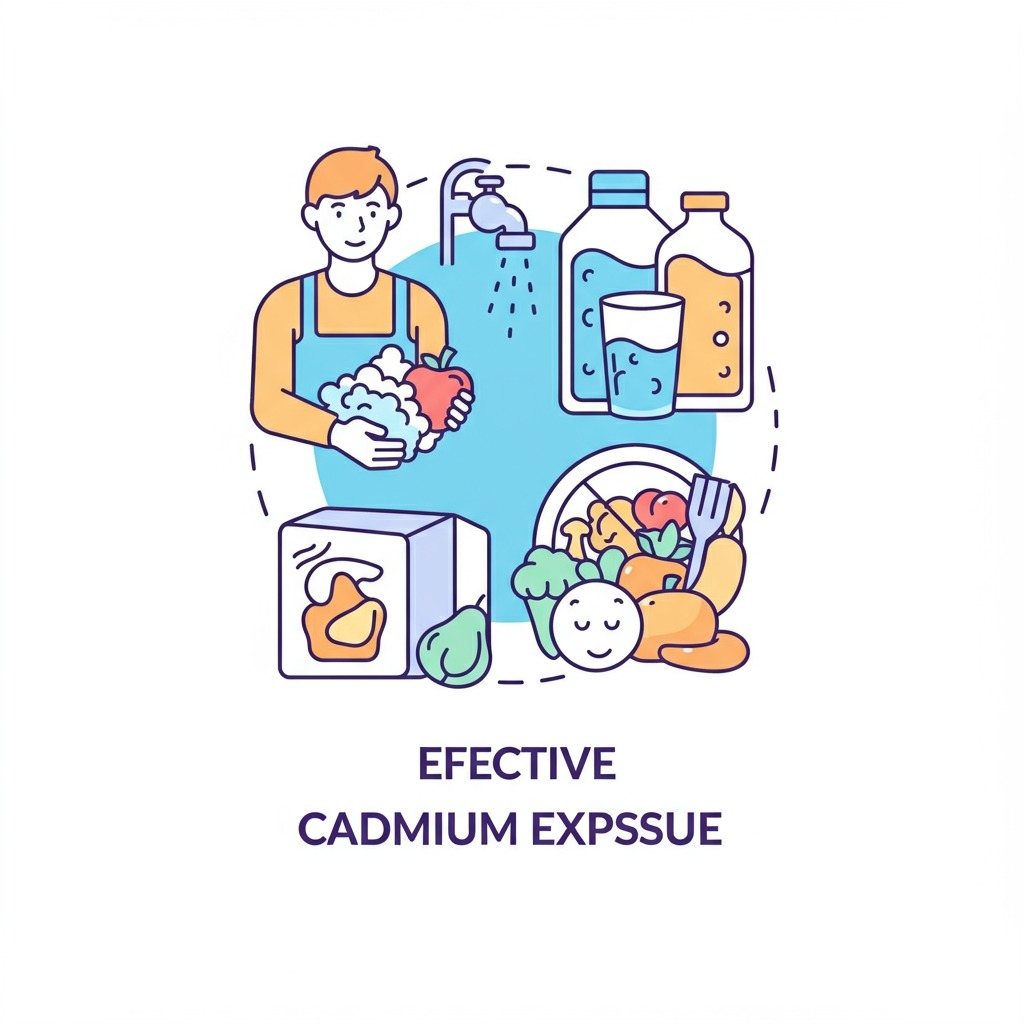
Regulatory Standards and Guidelines
Governments and health organizations have established guidelines to restrict the amount of cadmium in food products since they understand the risks of exposure.
Global Regulations
Cadmium levels in food are routinely monitored, and regulatory limits are set by the World Health Organization (WHO) and several national health boards. Typically, these actions include:
- Cadmium levels in food goods are being tested.
- Setting maximum allowed levels for cadmium in food.
Consumer Safety Initiatives
Additionally, nations carry out consumer safety programs to reduce exposure to cadmium, such as:
- Farmers are educated on optimum procedures for using soil and fertilizer.
- Public awareness initiatives to educate consumers about the risks of cadmium and how to reduce them.
The Future of Cadmium in Food Safety
It is hoped that advancements in food processing, agribusiness, and regulations will result in less cadmium exposure for people as the world’s focus on food safety continues to expand. Governments, businesses, and consumers may work together to create a safer food supply for coming generations.
In conclusion, public health can be greatly impacted by knowing the origins and hazards of cadmium, even though it is a naturally occurring metal that can enter the food supply in a variety of ways. The hazards related to cadmium in food can be reduced with increased consumer and farmer awareness and proactive efforts.
Frequently Asked Questions